Welcome to Australia/Oceania
Australia is the oldest landmass in the world. Throughout the continent, you’ll find ancient volcanoes and smooth rock formations weathered by time. In contrast, to the east, the Ring of Fire births new land regularly in Oceania. Both continental Australia and its island neighbors have rich culture, unique wildlife, and breath-taking scenery that is sure to amaze. It may be a long journey to get here, but you won’t regret your fly-by down under, guaranteed!
Must see countries in Australia/Oceania quick links: Australia | Fiji | French Polynesia | New Zealand | Papua New Guinea | Solomon Islands | Vanuatu
Australia
Great Ocean Road
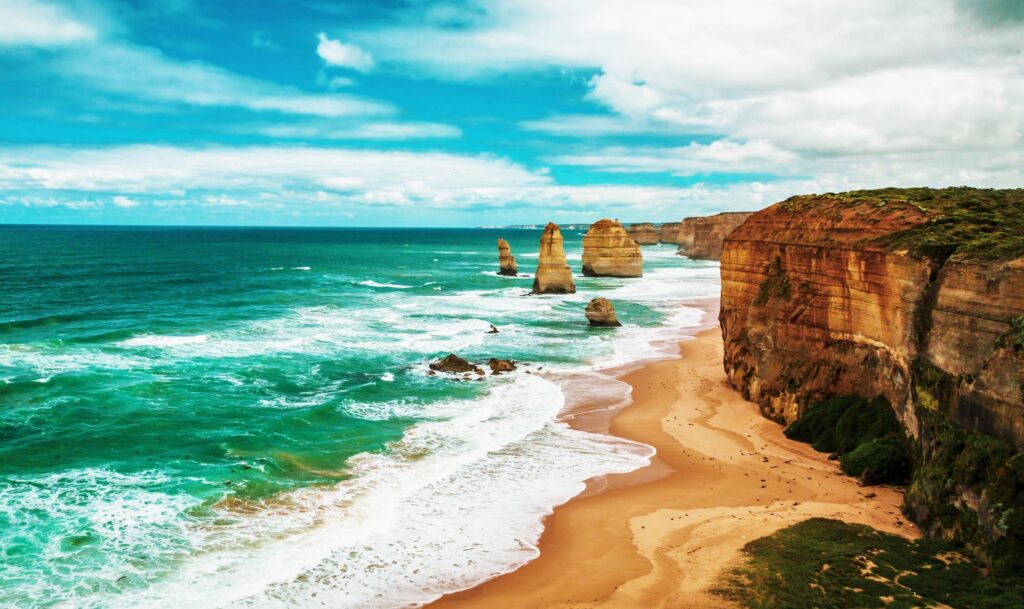
Looking for a down under road trip? Look no further than the Great Ocean Road, a scenic route through southern Victoria along the Southern Ocean. Along with stunning sea-views, you’ll have the opportunity to experience an Australia unseen by your everyday tourist. A number of natural attractions may be found along the road, the most famous of which is the 12 Apostles. You’ll also find waterfalls, redwood forests, and gorgeous rock formations along the way. The route is 664 km in length and takes roughly 9½ hours of driving time.
Sydney
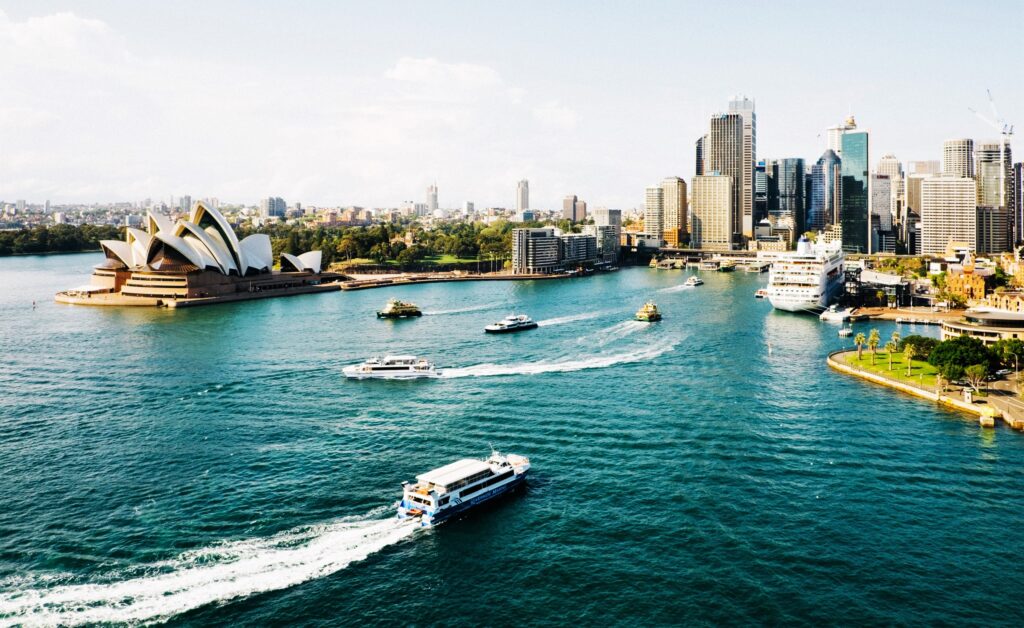
Sydney is a multicultural gem down under. There’s a lot to see in Sydney, the most iconic of which are the Sydney Opera House situated right on the harbor, the Sydney Harbour Bridge just across the way, as well as Bondi Beach, a legendary beach known for its surfing. There’s also a ton to do in the Harbour City, like visiting its free public museums, enjoying the nightlife in King’s Cross or The Rocks, or heading down the road to wine country in Hunter Valley. Sydney is one of the most expensive destinations in the world, so come mentally prepared to spend a pretty-penny. Sydney’s public transportation system has a bus, a train, a tram, or a ferry that can get you wherever you want to go with the tap of your Opal card.
The Great Barrier Reef
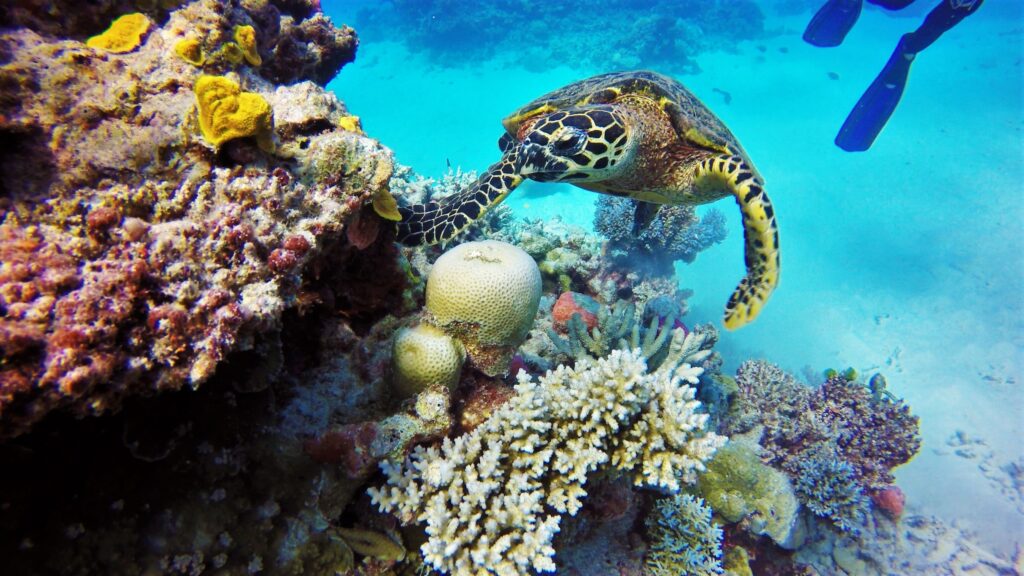
If you travel to witness the beauty of our planet, seeing the Great Barrier Reef for yourself is non-negotiable. It’s the largest coral reef system in the world and is home to an incredible amount of marine wildlife. There are many ways to see the reef for yourself, depending on how active you’d like to get. Snorkeling and diving are obviously the best ways to get up-and-personal with the reef, but there are still stunning views to be had on a flightseeing trip or boat tour. The Great Barrier Reef is huge, so there are plenty of Australian towns from which you could explore it; Cairns, Green Island, and Whitsundays are good options. To ensure good visibility, avoid the Southern Hemisphere summer’s rain and heat.
Uluru-Kata Tjuta National Park![]()
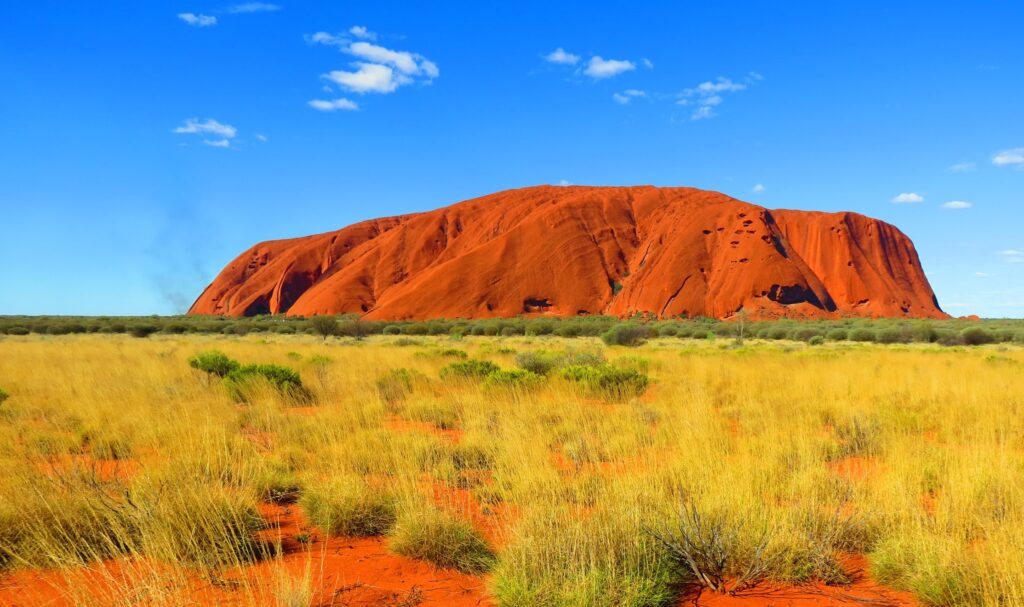
Uluru is arguably Australia’s most recognizable landmarks. It’s an inselberg that rises up out of the bush in stark contrast to its flat surroundings. Its striking presence was important to indigenous Australians, which you can learn more about at the park’s cultural center or on a ranger-guided walk. A little ways away, you’ll find Kata Tjuta, a set of domed rock formations similar in composition to Uluru, next to the Walpa Gorge where you can catch a glimpse of the wildlife in the Australian bush. These magnificent sites are in the remote center of Australia, though you can fly into nearby Alice Springs and shuttle to the park. Driving is also an option if you would like to explore Australia’s interior on the Red Centre Way.
Fiji
Bouma National Heritage Park, Taveuni Island
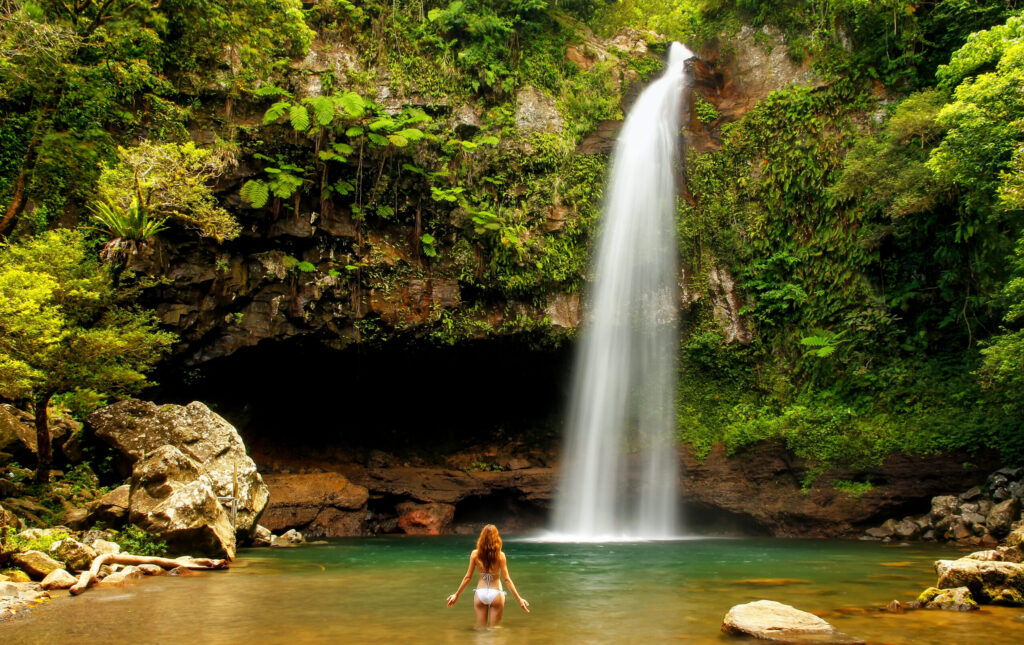
The fertile volcanic soil of Taveuni gives the island its claim to fame as the “Garden Island of Fiji”. In addition to supporting Fiji’s agricultural industry, the soils of Tavenui are home to nearly all of Fiji’s native plants. A great place to see Taveuni’s flora and fauna is Bouma National Heritage Park, which covers most of the surface of the island. The park isn’t an all-nature-all-the-time kind of place; four villages reside within the park. In these villages, you can organize a number of activities to enjoy in the park like snorkeling, guided hikes, and birdwatching. The Tavoro Waterfalls are a must-see and can be reached via a 6 km hike. Make sure you’re wearing your bathing suit so you can enjoy the natural pools below!
Mamanuca Islands
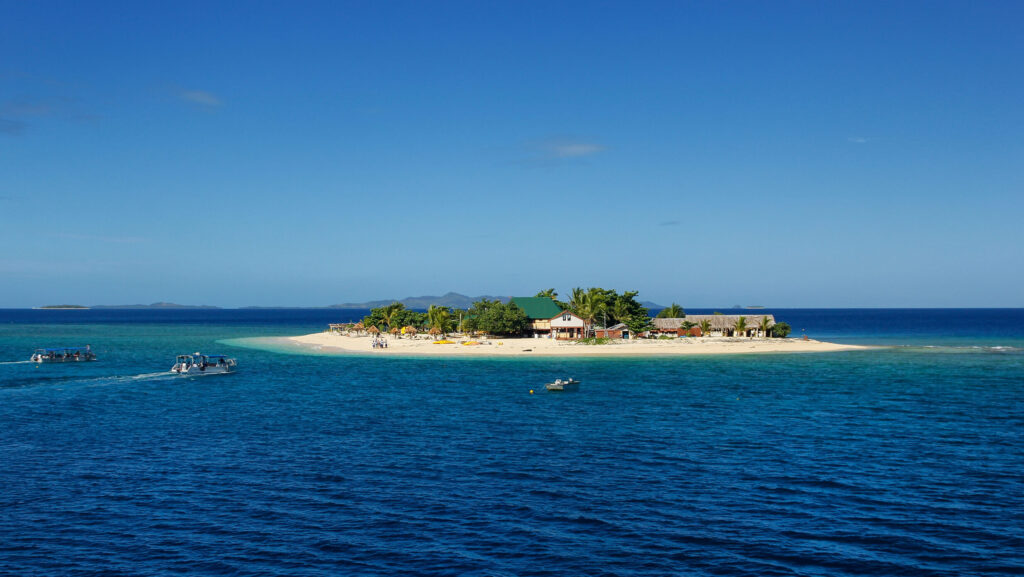
The Mamanuca Islands is an archipelago off the western side of Fiji’s main island. These islands are home to excellent surfing, pristine island landscapes, and world-class resorts for some top-notch R&R. Nadi, Fiji’s third-largest town, will serve as your jumping-off point for your Mamanuca Islands adventure. After a 15-minute taxi and a two-hour ferry ride, the islands are yours to explore! Alternatively, more structured day-trips to the island can be a great bang-for-your-buck. While you’re there, you can enjoy a wide-array of water-based activities, enjoy the beach, or take in a cultural show. While the resorts there definitely get top-billing, there are accommodations for any budget in the Mamanuca Islands! On your way back, you can hit up the shopping scene on Denarau Island before continuing on your fly-by.
French Polynesia
Bora Bora
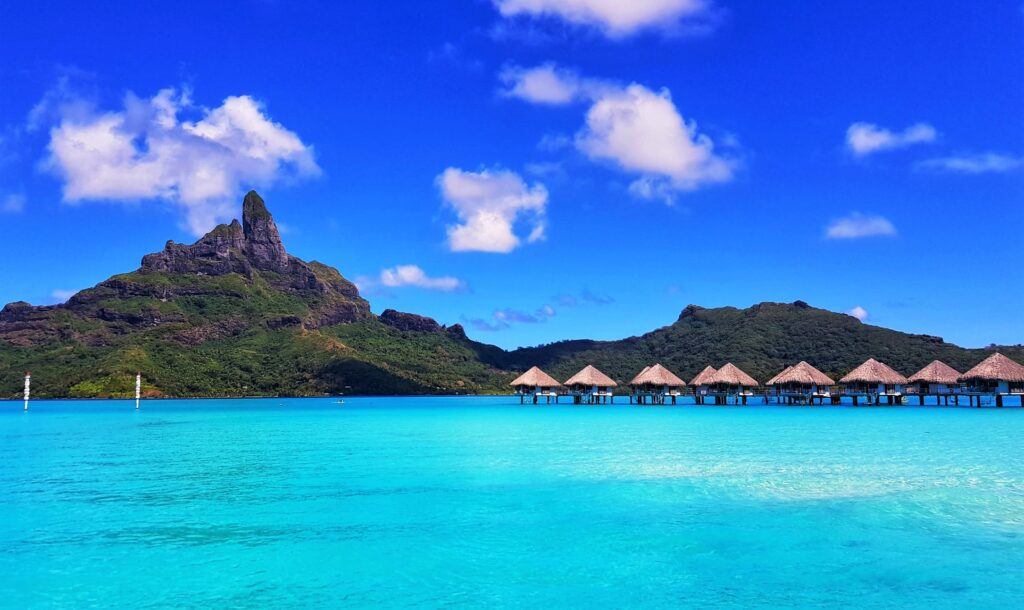
Captain James Cook once called Bora Bora “the pearl of the Pacific”. If you’ve ever seen a picture of the place, it’s hard to dispute him. Bora Bora is the place to be if you’re looking for a South Pacific resort experience. These resorts don’t come cheap though; to get five-star experiences, you need to shell out for five-star prices. Activities will vary by resort, but no matter what, snorkeling and scuba diving are a given. If you need to leave the resort for a while, take a shuttle to Vaitape to snag some souvenirs. Honestly though, the appeal of Bora Bora is to remove yourself from reality, so the resort may be enough for you.
Mo’orea
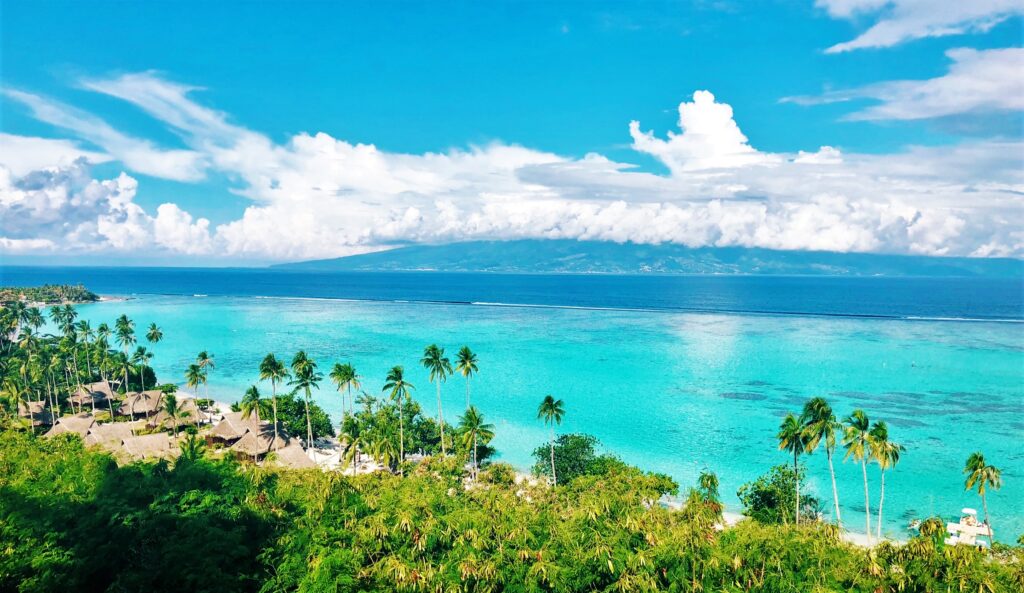
If you can’t handle being confined to a resort, Mo’orea might be the slice of paradise for you. It’s still a wildly popular South Pacific destination, but this little island offers something extra. Is the water as clear? Maybe not. Is the sand as white? Hard to say. But, does a resort have to define your experience here? Absolutely not. You can choose to enjoy the natural beauty, see how the locals live, and enjoy activities beyond lounging. It’s also cheaper than Bora Bora, for the most part since you’re closer to Pape’ete, French Polynesia’s travel hub. Mo’orea is a 45-minute ferry from Pape’ete and they run fairly often to accommodate your schedule.
Pape’ete
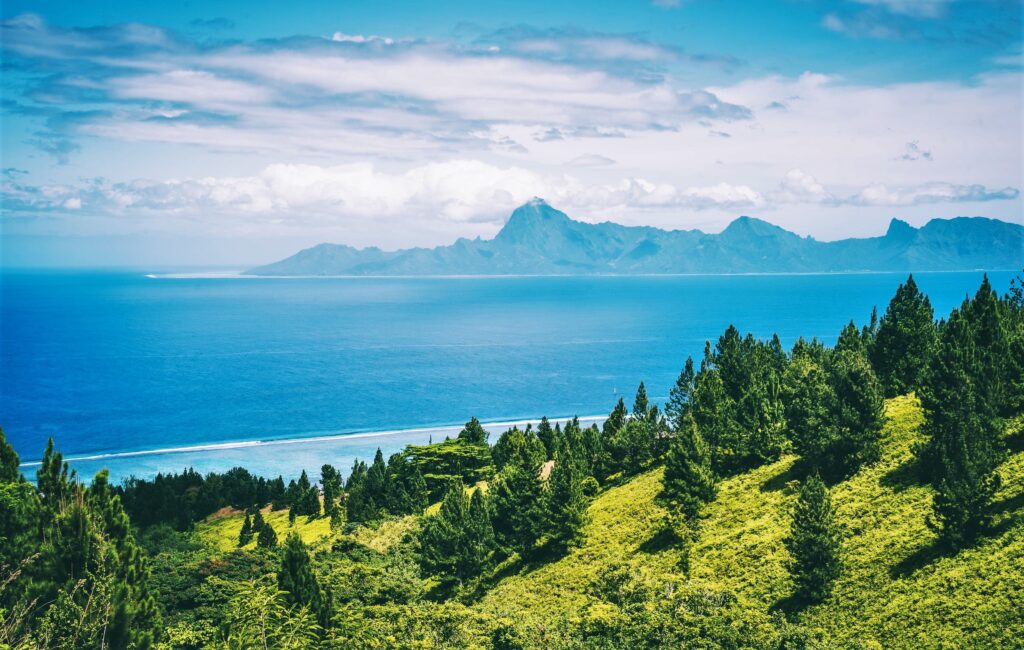
If you plan on visiting paradise, Tahiti is your gateway. The island of Tahiti is home to Pape’ete, the capital and economic hub of French Polynesia and most importantly, where the airport is. Pape’ete isn’t big, but towns of any size are few and far between in French Polynesia. There’s enough nightlife here to keep it interesting and the food scene is good, albeit expensive. A great alternative are the food stalls you’ll find around the city and in the Pape’ete Market. From Pape’ete, you can access tours of Tahiti or cruises that explore some of the other islands. If you would like to explore Tahiti in a more self-directed way, rental cars and taxis are available on the island.
New Zealand
Aoraki Mount Cook National Park
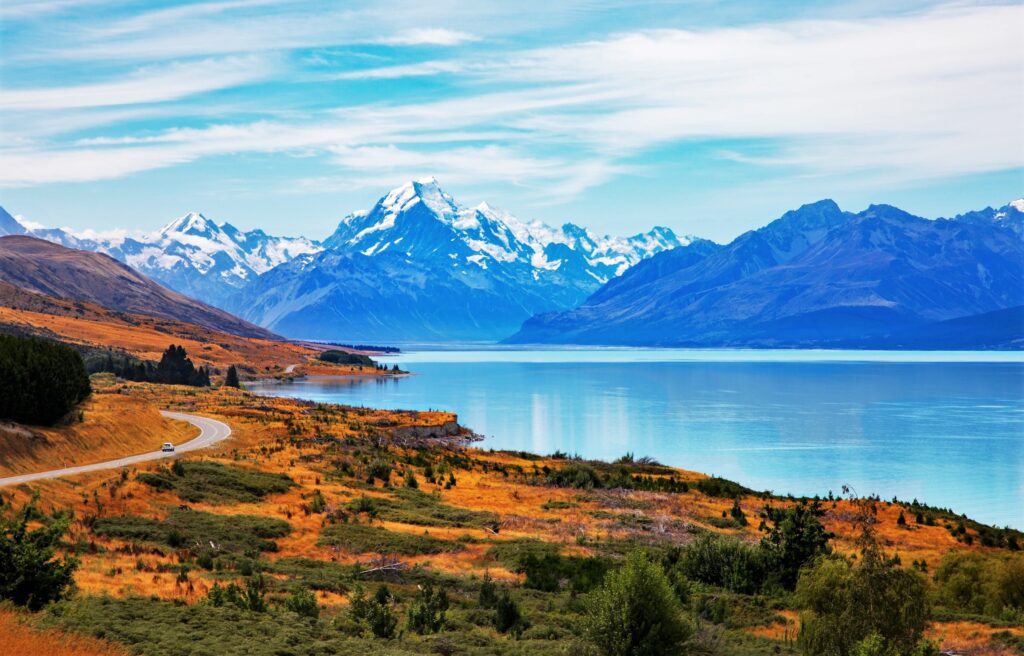
New Zealand’s Southern Alps are every bit as beautiful as their northern counterparts–see for yourself at Aoraki Mount Cook National Park! This park has everything you’d want in an alpine adventure. You want mountains? There’s peaks for days and they’re great to climb. Glaciers? Eight of New Zealand’s ten are in this park, including the 27km long Tasman Glacier. Fantastic views of the southern hemisphere sky? It’s an international dark sky reserve! The only thing missing is a cute village, but who needs cute when you’ve got gorgeous all around you? To get there, rent a car and cruise down the scenic State Highway 80 from Twizel.
Auckland
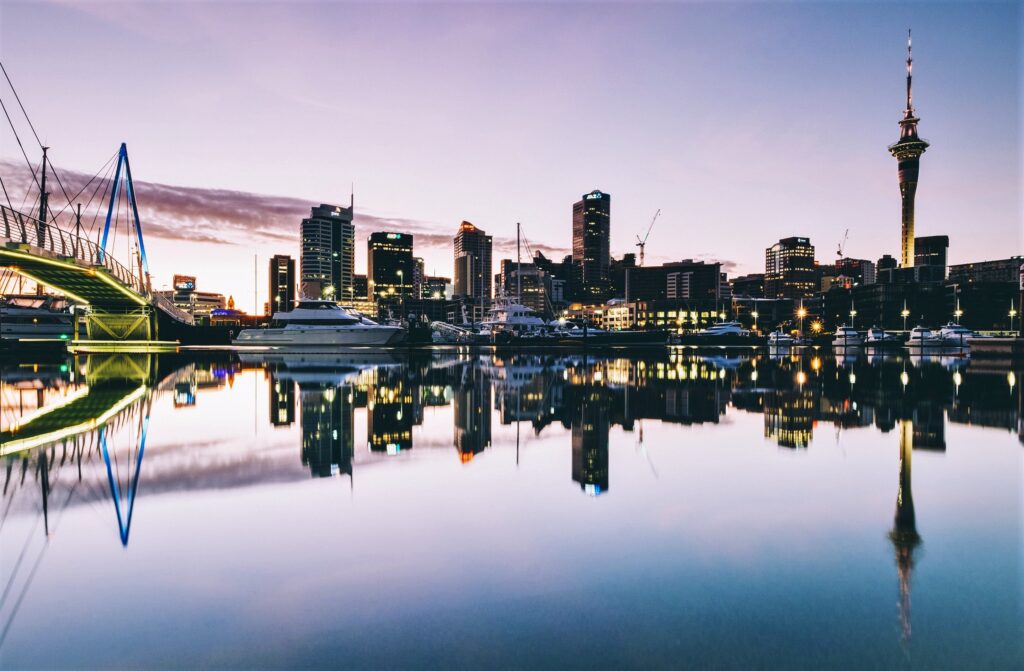
Auckland is the biggest city in New Zealand and is home to the largest ethnic Polynesian of any city. The indigenous Maori culture is especially important here, and there are a number of opportunities to explore it in Auckland. Sailing trips and walking tours around town delve into the area’s rich history before colonization. The city also boasts opportunities to experience the arts, lush greenspaces, beautiful architecture, and great nightlife. Being in a volcanic field, you can visit volcanoes nearby, like Mt. Wellington or Rangitoto Island. Public trains, busses, and ferries serve the city, making it simple to explore Auckland and the surrounding islands.
Bay Of Islands
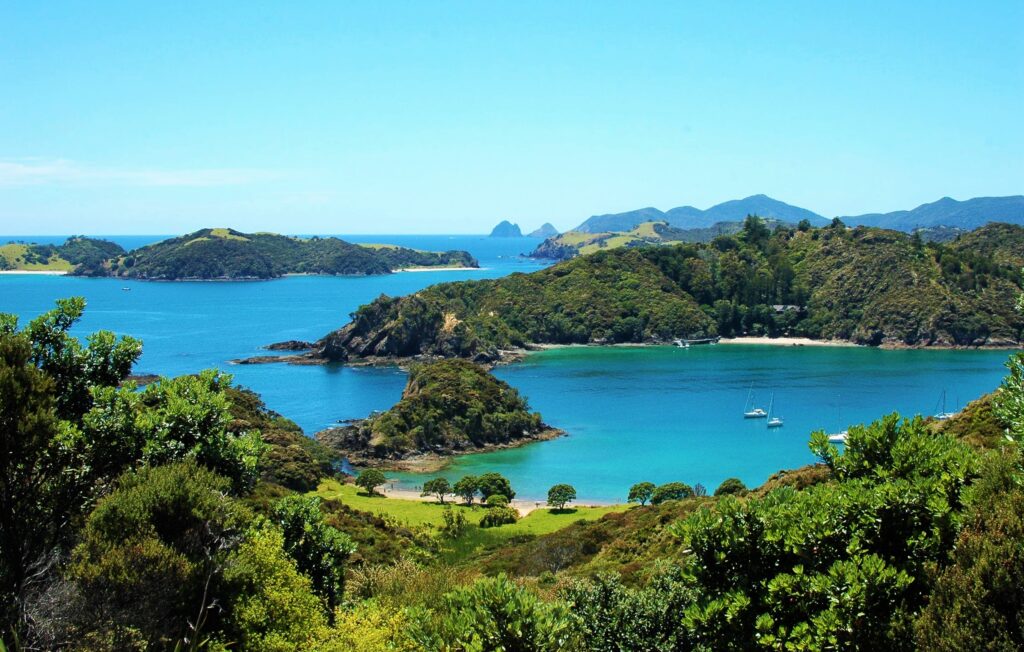
At the tip of New Zealand’s North Island, you’ll find the Bay of Islands renowned for its big game fishing. There’s a lot else you can do here if fishing isn’t your speed, too. There’s a ton of natural beauty in the area. Local boat tours will take you around the unique rock formations in the bay, some descended from ancient volcanoes. There are other natural points of interest in the area as well including waterfalls and hiking and cycling trails. There’s also opportunities to swim with dolphins or do a little whale watching, whether from land or on a boat tour. Russell is a great place to start exploring the area; it was the first permanent European settlement in New Zealand and has a lot of history. The Bay of Islands is a three-hour drive from Auckland along the east coast highway.
Queenstown
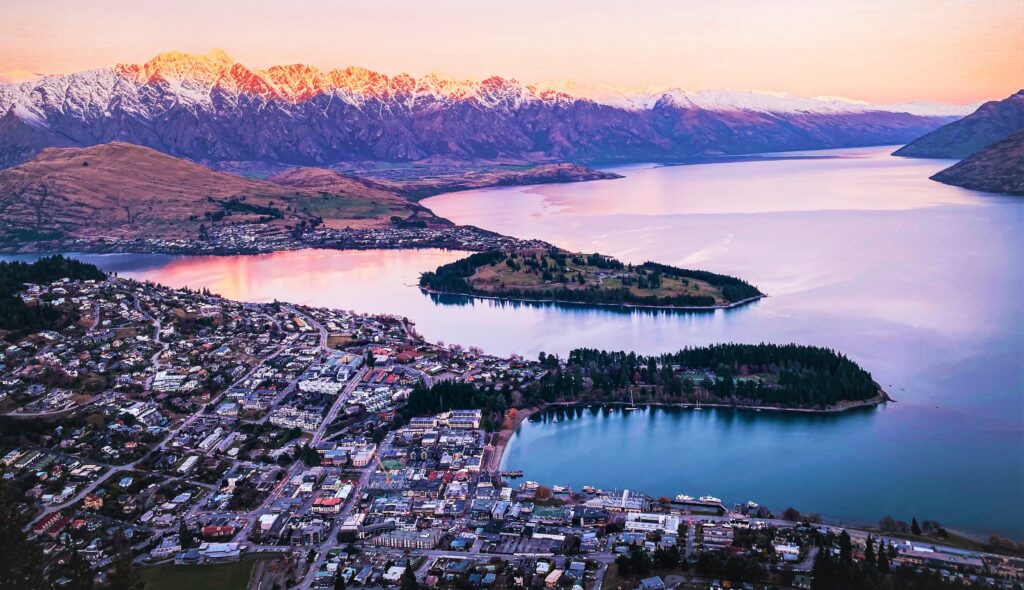
Adventure-seekers: Queenstown should be your go-to place for thrills in New Zealand. The skiing is great there, which may be why the local mountains are called The Remarkables (no, really). There’s plenty of other high adventure opportunities that don’t require snow, too. Skydiving, canyon jumping, horse trekking, white-water rafting–whatever you want, it’s there. Also, have you ever wanted to pretend you’re carrying the One Ring to Mordor? Queenstown and the surrounding area were locations for the Lord of the Rings movies, so you can channel that energy on a hike. When you’ve had your fill of adventure, relax in the cutesy resort vibes downtown Queenstown offers. You can get Queenstown by flying in directly, though driving is a fun and scenic option.
Papua-New Guinea
Kokoda Track
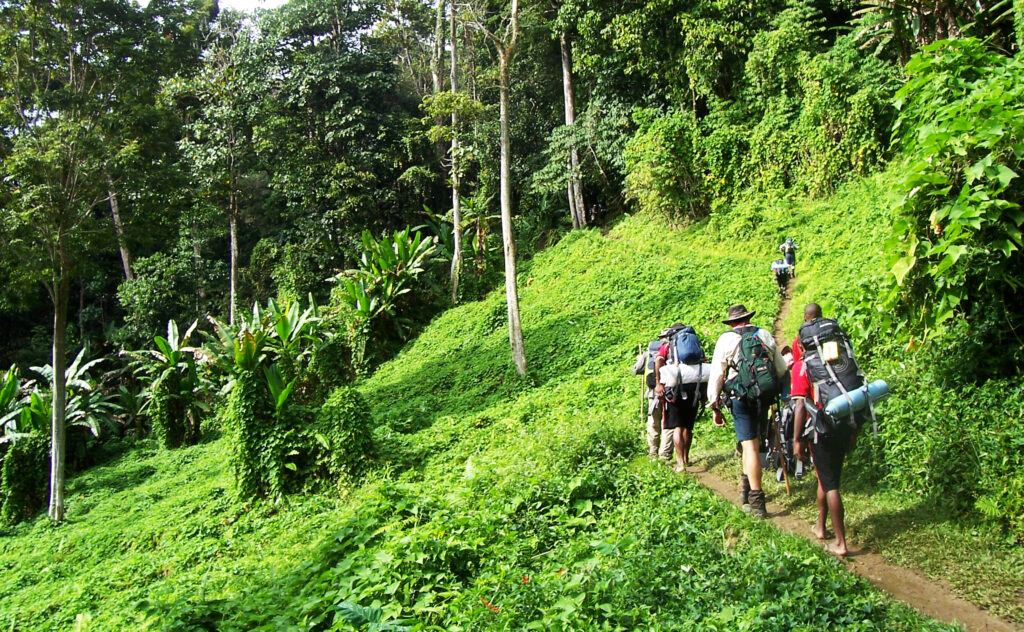
Expert hikers need only apply to brave the Kokoda Track. World War II buffs will recognize the name from the Kokoda Track campaign fought between the Allies and Japanese. Today, trekkers can walk the Kokoda Track and get a feel for what those soldiers experienced. While the conditions in the area may not be the kindest the world has to offer, the scenery is worth it. The track winds through indigenous communities and you can learn more about them by trekking with a tour company. You can opt to go independently, though you must have a permit to hike the Kokoda Track. Trekkers who visit must prepare extensively to hike the track, so make sure you do your research beforehand!
Mount Wilhelm
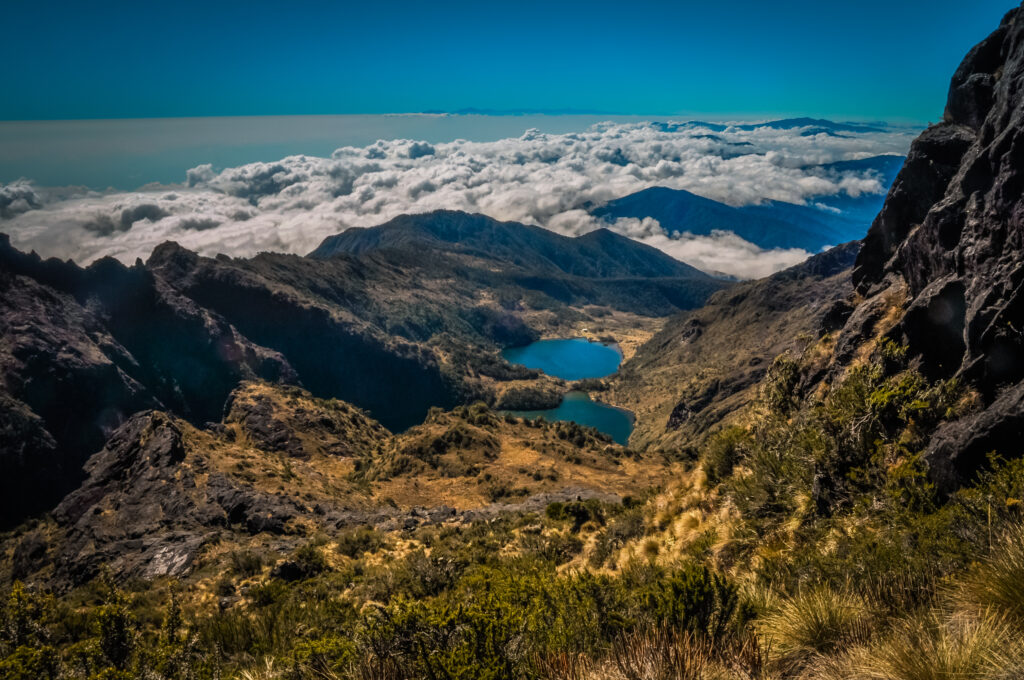
Mount Wilhelm is the highest mountain in Papua-New Guinea and in Oceania at just over 4500m. For such a big mountain, the hike is pretty simple from a technical standpoint. The hike can be completed in 2-3 days either independently or with a group. On the way up, you will pass through dense rainforest and around glacial lakes. As you near the peak, there will be some moderate bouldering involved and some steep rock faces. The view at the top is gorgeous, but make sure you go sometime May-November so you can actually see it unobstructed by clouds. To easily access the mountain, you can fly into Mount Hagen Airport, then take a car over to Betty’s Lodge and start your journey.
Port Moresby Nature Park

Port Moresby is Papua-New Guinea’s capital and largest city. Though the city has a bad reputation, there are bright spots, including the Port Moresby Nature Park. The park’s 30 acres have a lot to offer, including wildlife-viewing, gardens, and cultural displays. You’ll have the opportunity to see 550 native species, including arguably the most aggressive thing on two legs, the cassowary. Among the cultural displays are artifacts from some of Papua-New Guinea’s indigenous groups like the Gogodala and Sepik River peoples. Port Moresby can be very dangerous, so be cautious and aware when accessing the park.
Tavurvur
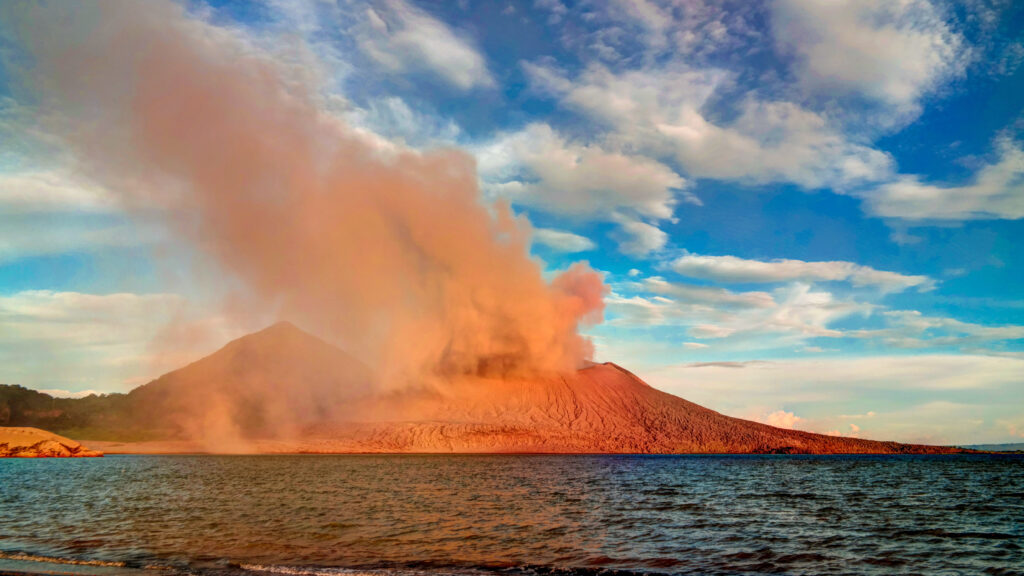
Tavurvur is an active volcano on the island of New Britain, to the west of mainland Papua-New Guinea. Its last eruption in 2014 was dramatic, spewing lava hundreds of feet up and covering the area with ash. The oft ill-fated town of Rabaul lies in Tavurvur’s shadow, frequently punished by eruptions. However, Rabaul does play host to a number of activities to satisfy your thirst for adventure. Besides viewing Tavurvur, scuba diving and snorkeling are popular choices, or you can explore the native Tolai culture. Visiting this spicy little corner of the Earth is pretty simple–just hop a flight from Port Moresby!
Solomon Islands
Honiara

Honiara is the capital and largest city of the Solomon Islands, serving as the nation’s travel hub. The city resides on the island of Guadalcanal, making it rich in Pacific Theater World War II history. While in town, visitors can explore the battlefields found around the city, the national museum, and the botanical gardens. Outside the city in the dense jungle, there are some waterfalls that are worth the hike. Mataniko Falls are just a little way outside the city, accessible by a short hike. Further east is Tenaru Falls; it’ll take you a half-day to get there, but the view is worth it! Taxis are pretty much the only way to get around town, though they’re pretty cheap.
Marovo Lagoon
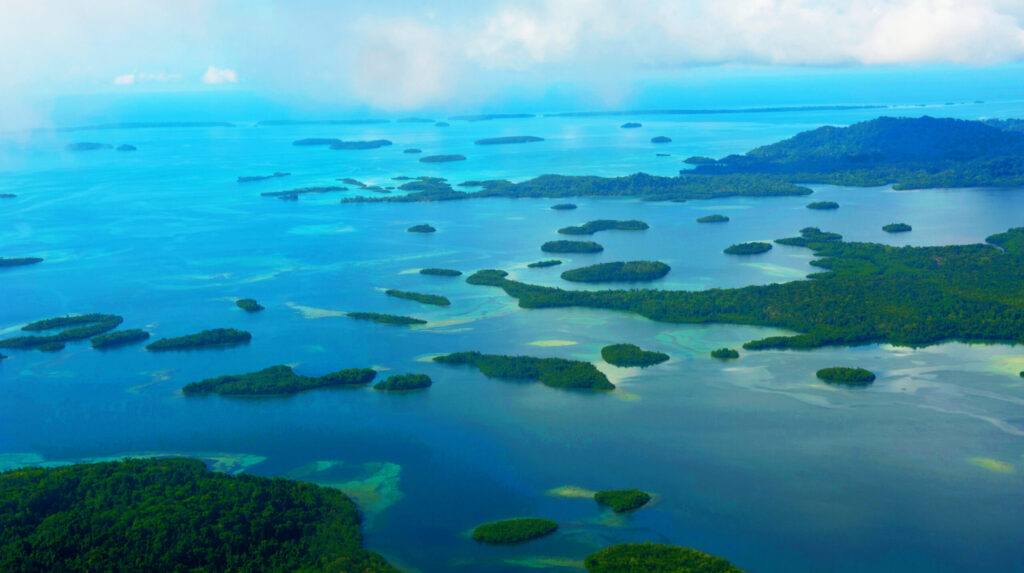
On the island of New Georgia, you’ll find Marovo Lagoon, the largest double-barrier enclosed lagoon on Earth. The lagoon is so big it contains several islands within, some of which are inhabited. Woodcarving is a popular occupation among the locals, so you’re sure to see some beautiful carvings in the villages. The area is rich in biodiversity which you can explore in a scuba diving excursion. This is an off-the-beaten path kind of destination, but still offers nice accommodations while giving you a distinctly Solomon Islands experience. To get here, it’s a one-hour flight from the Solomon Islands’ capital, Honiara.
Vanuatu
Champagne Beach
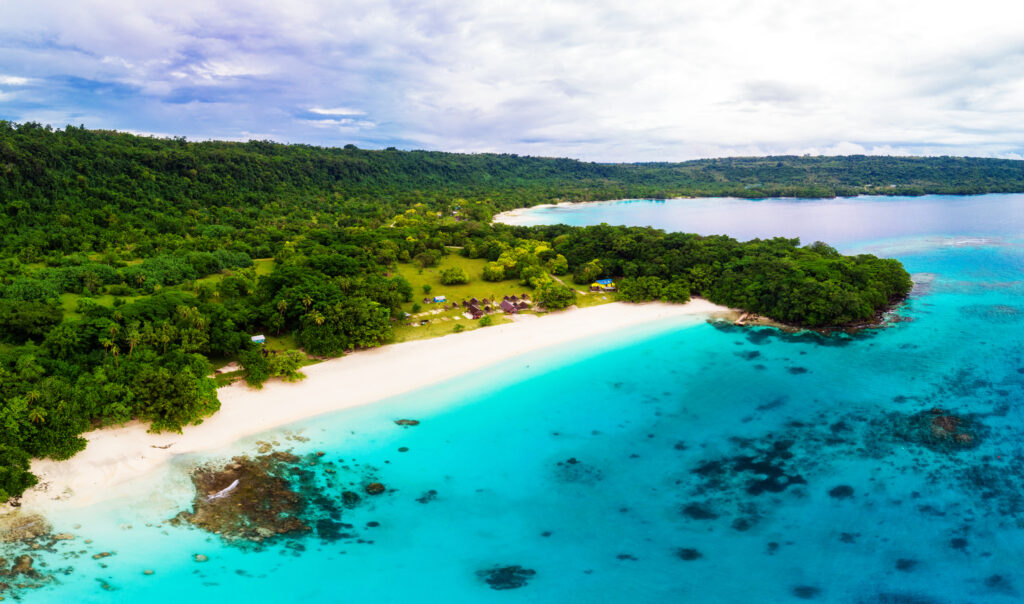
Champagne Beach really is the champagne of beaches. It’s one of the most popular beaches in the South Pacific, known for its clear blue waters and fine white sand. It’s also on the island of Espiritu Santo and would make for a relaxing follow-up to a grueling Millenium Cave hike. Champagne Beach has enough amenities, food included, to allow you to make a day trip out of it. A 45-minute drive from Luganville is all that separates you from some stellar relaxation.
Mele Cascades
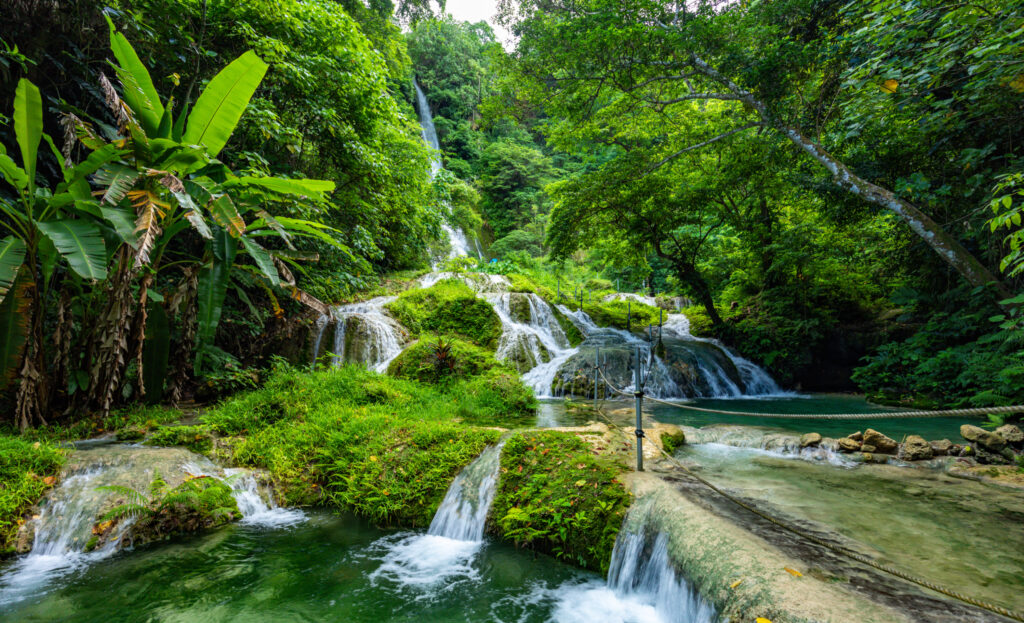
The Mele Cascades are a great place to begin exploring Vanuatu’s natural beauty. Situated about 20 minutes outside Vanuatu’s capital Port Vila, it’s easily accessible. Seeing the cascades takes about three hours and is a very walkable hike suitable for most travelers. The tallest of the falls is about 50m and at the bottom, you will find natural bathing pools. In addition to seeing the falls, some tour operators will also take you to a nearby garden.
Millennium Cave
Adventurers, you won’t want to sleep on Millenium Cave! It’s the biggest cave in Vanuatu and exploring it can only be described as a journey. Found on Vanuatu’s largest island, Espiritu Santo, cave tours begin in Luganville, the island’s largest town. A tour of the cave will take you about eight physically demanding hours and involves hiking, rock-climbing, and swimming. If you’re up for the challenge, you’ll be greeted with stunning scenery, like the “Hidden World” waterfall. Vunaspef village begins and ends the tour and provides a glimpse into Ni-Vanuatu life.
Mount Yasur
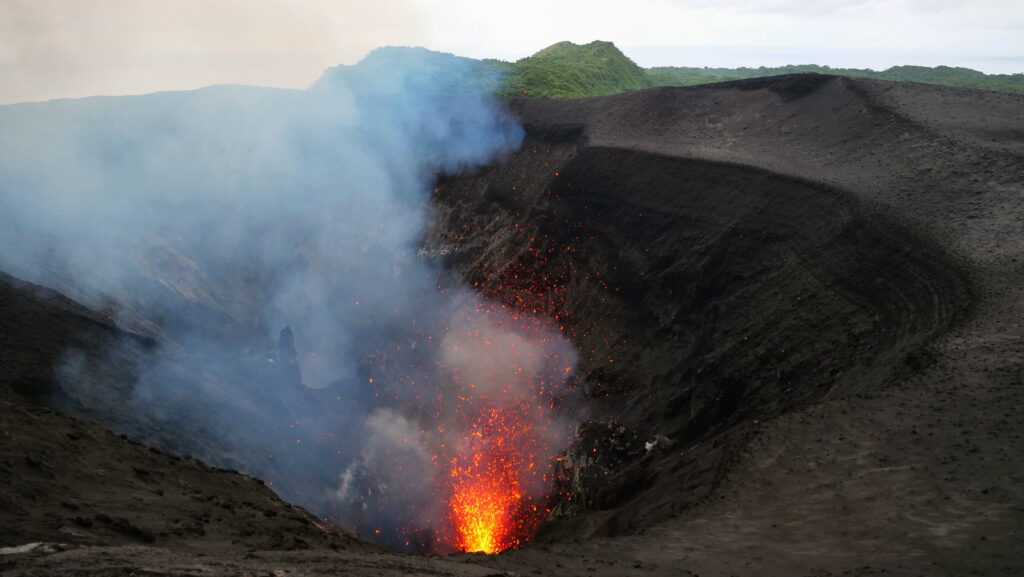
Mount Yasur is a very active stratovolcano that has been constantly erupting for hundreds of years. It’s not as dangerous as you think though! Because of its relatively safe eruption activity, it’s one of Vanuatu’s most popular attractions. It’s also home to the only mailbox on an active volcano, so bring your postcards. No matter where you are on Tanna Island, getting to Mount Yasur on a tour should be fairly simple from any hotel.
Must see places around the World by continent:Africa | Antarctica | Asia | Australia/Oceania | Europe | North America | South America

